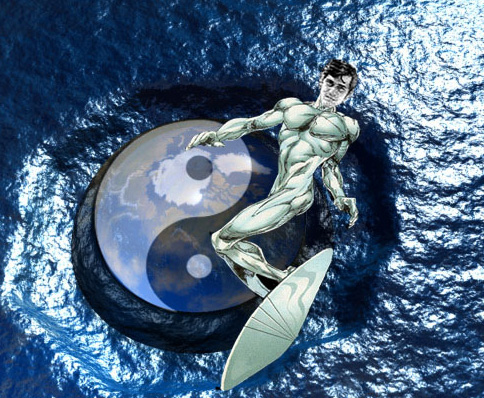What you see to the left is a field generator inner core consisting of six mobius coils. It's pretty much the same as all the other inner cores I built, only this one has 600 feet of insulated 20 gauge solid copper wire, made basically the same as the other coils I made for my other field generators. That is, 100' of wire doubled twice and twisted counter-clockwise until the cable has a 45 degree twist, and wound around itself at three points until I have a tightly wound ring that looks like an emaciated bagel. I stacked all six of these coils and wired them in series, creating a massive, 600 foot mobius coil that looks more like a tower than a disk.
This project is only half way finished and I would've completed it last night if I was at all satisfied with a flat top and bottom cylinder. It's the edges on this thing that bothered me and on previous projects where I studied the before and after effects of rounding off edges and filling voids, I realized I need to adjust the design before I move on.
As I sat at my computer and pondered this problem, I glanced to the paper plate sitting on top of my printer. Pulling out my ruler, I measured the dish diameter and it measured 8.5 inches. The perfect size I needed!
Grabbing a clean paper plate and a 4" PVC coupler, I proceeded to make a torus dome for the inner core.
The coupler is held to the plate with nothing more than Vaseline and the plate got a couple squirts of WD-40 as a release agent. Removal from the mould was too easy and I was able to use the same plate for the other side as well.
The fit is perfect and turned the inner core from a cylinder to an elongated torus.
You may be thinking, why bother? It's going to work the same whether it's round or square, right? Well... not really. From past experiments I found edges and voids distort the energy flow. The energy from these things seem to exit out an edge, and a cylinder has four edges, two on the inside and two on the outside. By eliminating the outer edges I'm able to concentrate the energy in the open shaft where it belongs. On a torus shape, such as this, the energy flows over the outside walls and concentrates in the center shaft, like an energy vortex. This energy easily travels over flat surfaces and smooth bends. An edge would divert and dissipate the energy and voids in the surface disturb the flow. Think of running over a speed bump and immediately hitting a pothole doing 35mph.
I'll let ya know if all this was worth the effort.
Saturday, March 19, 2016
Subscribe to:
Post Comments (Atom)




No comments:
Post a Comment